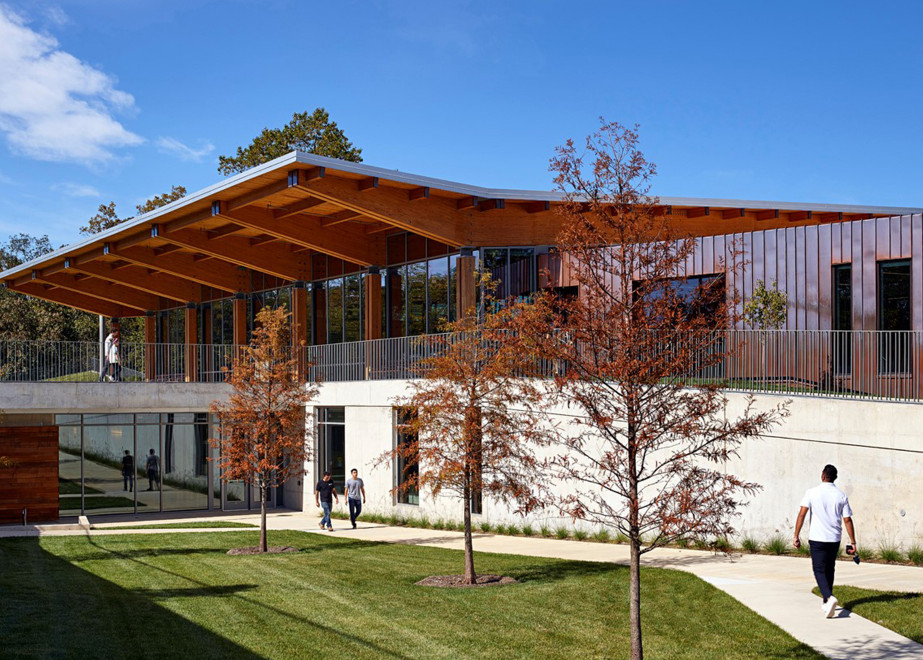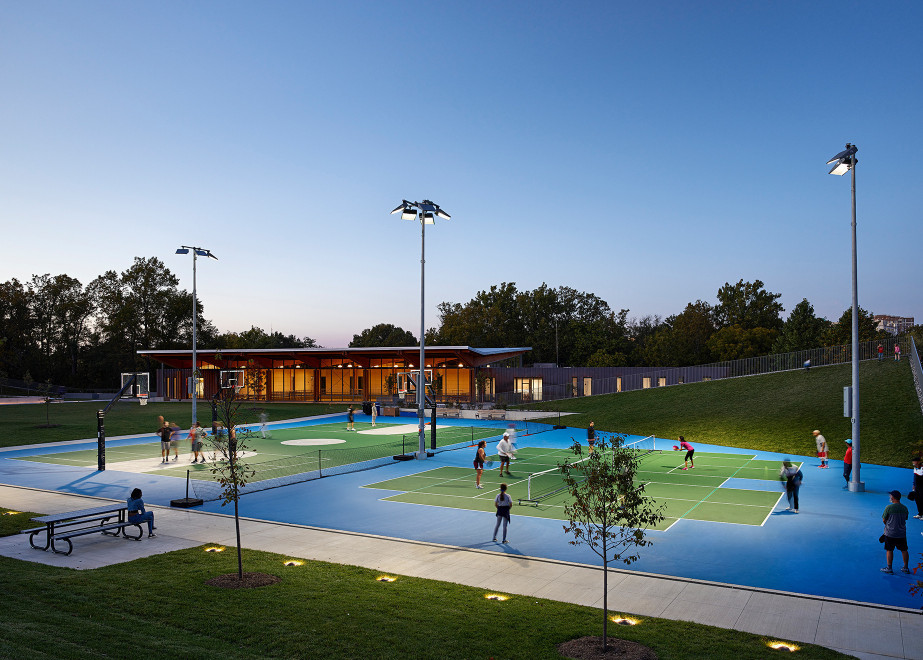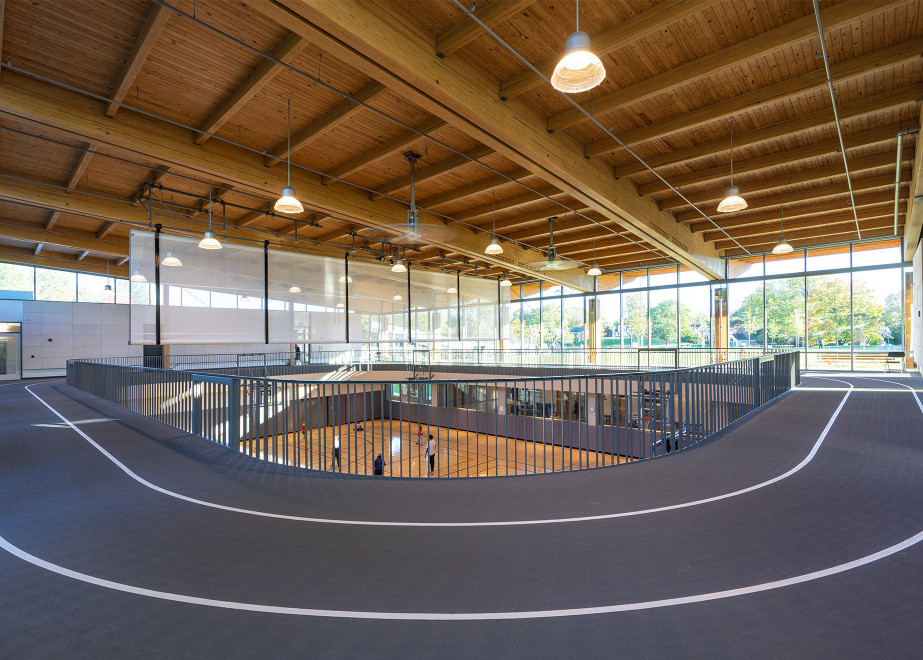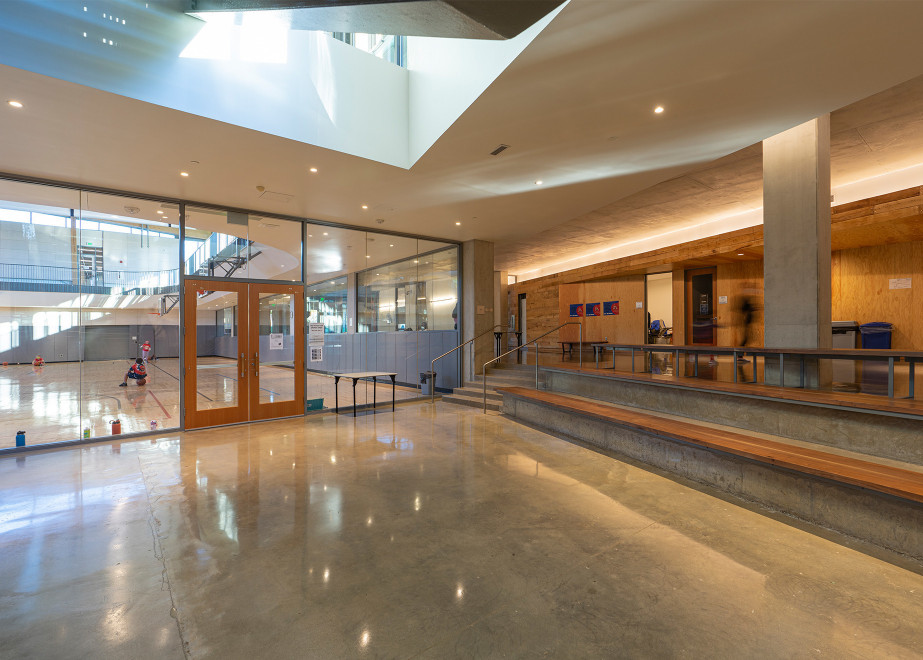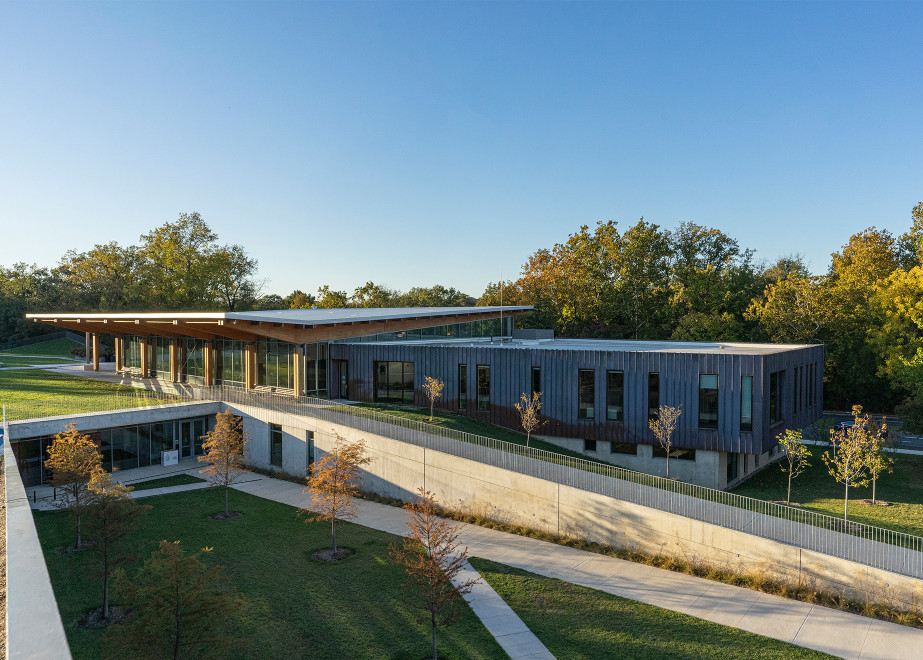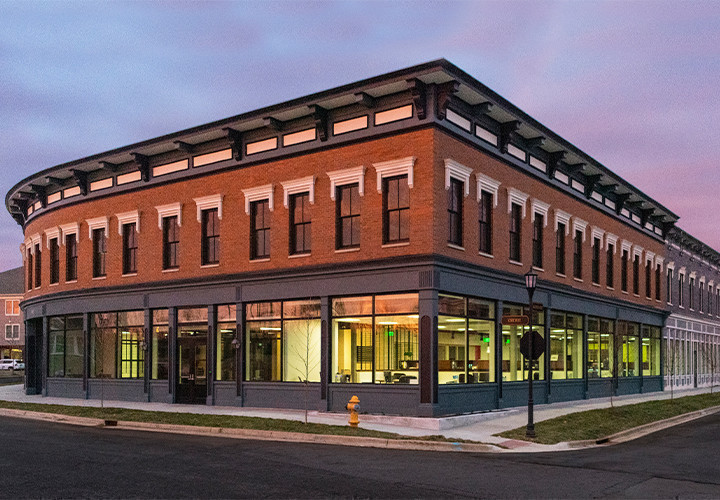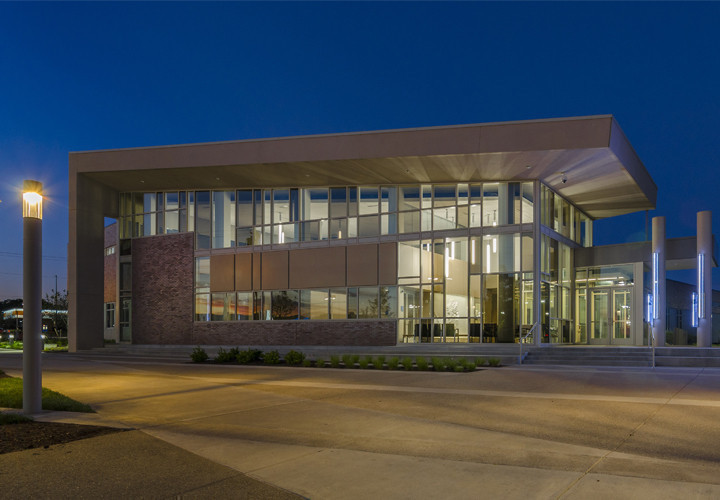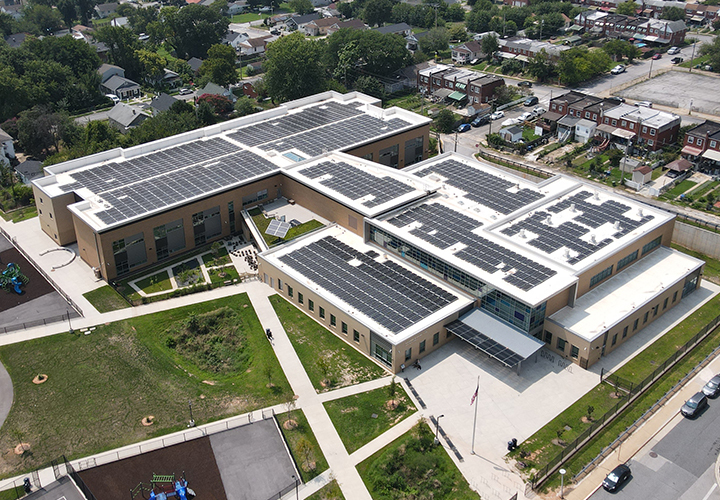A Community Center Designed for Tomorrow's Energy Landscape
The Lubber Run Community Center was designed for tomorrow’s energy landscape. Intended to serve as a cornerstone for the community, the 53,165 square foot building features meeting spaces, offices, classrooms, exercise areas, and a gymnasium that are open to the public. An expansive green roof over the attached parking garage includes playgrounds, as well as basketball and tennis courts. As the first project in Arlington County, Virginia to use a zero energy design, the building demonstrates how to be a good steward for the community, the earth, and the local utility grid.
